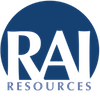
Three HR Compliance Guides to OSHA Regulations
Whether you work in an office setting, an active manufacturing plant or a busy construction site, every workplace comes with potential hazards of different types. That is the reason for the existence of the Occupational Safety and Health Administration (OSHA), the federal agency responsible for enforcing safety rules at workplaces.
Many businesses task their HR teams to ensure compliance with OSHA laws. As an HR professional or a business owner, have you stayed in touch with OSHA regulations? Read on to learn more about what OSHA is and how you can protect your employees and your business.
Who is covered by OSHA?
Majority of the private employers in the United States and Puerto Rico are under the jurisdiction of the Occupational Safety and Health Act (OSH Act). All business sizes are entirely covered, except those with 10 workers, which are not subjected to some of the recordkeeping requirements of the law.
The law is applicable to only private employers – not federal or state – except that jurisdiction has a distinct safety law that makes them a subject under the OSH Act. Also, exempted are self-employed and small firms, where the employees consist of only immediate family members. Industries – like nuclear energy – are also not regulated by OSHA, but instead by the federal government.
What is a Safe Work Environment?
OSHA, as a regulatory agency, is solely responsible for defining what “safe” means. To keep up with the evolving nature of work, OSHA continually releases new regulations and standards to be followed by employers, which are listed in detail on the OSHA website.
The list, grouped according to different industries, contains comprehensive workplace safety and compliance information for HR professionals and business owners. The exhaustive list conveniently covers every possible detail and scenario, from how to properly install extension cords to minimum training requirements to proper signage. A third-party consultant, like RAI Resources, is the go-to option if you are not certain of how conformed your workplace to OSHA Rules is.
“Work-Related” Injuries
Work-related injuries generally refer to most illnesses or injuries suffered within the confines of a workplace. While all workplace injuries have to be logged, there are exceptions to this definition. For instance, if an employee voluntarily partakes softball or yoga or any other company-sponsored recreational activity, injuries sustained in the process are not work-related. Likewise, an individual that gets hurt while working during off-hours is not covered by OSHA requirements, as they are viewed as “members of the general public.”
For companies that have several of their employees working from home, are the companies responsible for on-the-job injuries sustained outside the physical location? There exists a complication to this, partly because the OSHA Act has been active a long time before the advent of “WFH.” Though OSHA stipulates that federal law requires a company to ensure a “safe and healthful workplace, not a safe and healthful home,” it still deems some domestic injuries as work-related. According to their newest interpretation, dropping a box of official files on one’s foot might count for a work-related injury, while injuries sustained in a rush to catch up a virtual meeting are not.
Requirements for Recordkeeping
HR professionals are not new when it comes to documenting, from employee records to performance reviews to workplace injuries. Are you familiar with what needs to be recorded and how to file a report?
To log any employee injury that “involves loss of consciousness, restricted work activity or job transfer, days away from work, or medical treatment beyond first aid,” the OSHA Form 300 is required. These forms are expected to be kept for at least five years after the incident, while each of your physical office locations keeps their own logs. However, no need for a different log for employees that work from home. All workplaces are required to hang clearly their Form 300A from February 1 to April 30, regardless of the absence of workplace incidents on record.
A separate set of reporting requirements is needed for more serious incidents. According to OSHA, in cases of “in-patient hospitalization, amputation, or loss of an eye,” a workplace injury must be reported straight to OSHA within 24 hours, either through their online portal or by telephone at 1-800-321-6742.
Whistleblower Protections and Inspections
OSHA encourages employees speaking out against irregularities in safety. And their hotline and website are available for employees to do the same. However, these complaints cannot be filed under anonymity and filing a false claim is punishable by a fine of $10,000. In the same way, workplace discrimination claims are handled by federal and state laws, whistleblowers are protected and cannot be fired, demoted or made to face any adverse disciplines for complaining to OSHA.
Need help with your workplace safety programs and compliance? RAI Resources are an experienced HR consulting firm that brings your business the real-world experience it needs across manufacturing, engineering, construction, and professional services. We offer practical solutions and provide comprehensive support to help you create a compliant workplace safety program, recruit and outplace talent, and more.
RAI Resources services in the greater Philadelphia. Get in touch today to learn more about how we can help protect your employees and your business.
We Want To Hear From You
How can our customized solutions help your business? Connect with our team to learn more.

1000 York Road
Suite 3C
Willow Grove, PA 19090
Phone: (215) 230-5555
info@rairesources.com